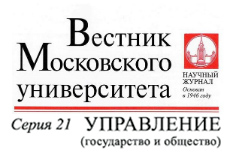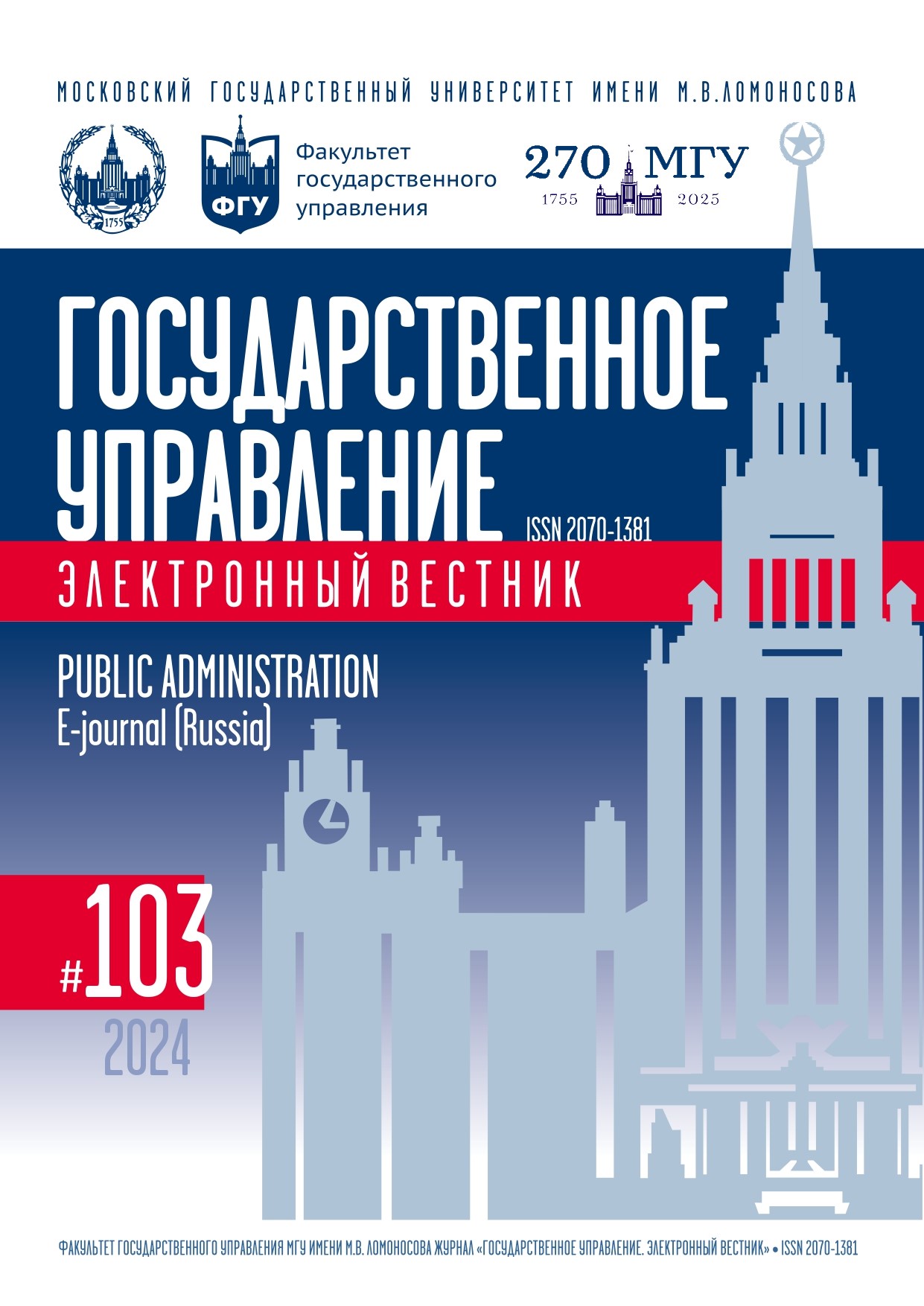Strategic Planning at Federal Level: Main Elements and Structural and Logical Connections
DOI:
https://doi.org/10.24412/c8vrr433Keywords:
Strategic planning, strategy, mission, goals, direction, priority, task.Abstract
A significant problem of the organization of strategic planning is the lack of a unified methodology for the development of strategic planning documents. At the same time, coherence is not achieved between the accepted documents on targets, tasks, and time frames. The author supports the view that it is necessary to adopt a special normative document that removes these contradictions, and, as a contribution to its development, a number of methodological solutions are proposed, without which the development of a unified methodological approach seems problematic. The article summarizes the practice of federal strategic planning (25 current and 5 discontinued federal strategies are analyzed). It has been established that when developing federal strategies, a wide variety of approaches are used to establish consistency and interrelationships between the elements of strategies. The relationship between the elements is unclear or completely absent. In addition, the interpretations of different elements (goals, directions, priorities, tasks) often do not differ, and are also characterized by features not peculiar to these elements. As a result, the strategy turns into an enumeration of all possible common intentions with an indistinctly expressed, and therefore difficult to control end result. The adaptation of the mission concept from corporate strategic management to state management is considered appropriate. The essence of individual elements of the strategic plan is clarified, and their concepts that are absent in federal legislation (such as direction, priority) are formulated. A structural and logical scheme of the strategic plan is proposed, linking all the elements of the plan into a single system — from the mission to the tasks, as well as containing recommendations on the most appropriate placement of these elements in various types of strategic planning documents. The implementation of the proposed approach will help streamline the development and presentation of strategies, make the choice of strategic goals and directions more reasonable.
References
Бухвальд Е.М. «Основы государственной политики в сфере государственного планирования»: нерешенные проблемы // Вестник Института экономики Российской академии наук. 2022. № 1. С. 32–49. DOI: 10.52180/2073-6487_2022_1_32_49
Козоногова Е.В., Дубровская Ю.В., Русинова М.Р., Иванов П.В. Оценка соответствия приоритетов стратегического развития регионов их отраслевой специализации на основе Text Mining // Вопросы государственного и муниципального управления. 2022. № 2. С. 106–133. DOI: 10.17323/1999-5431-2022-0-2-106-133
Ленчук Е.Б. Стратегическое планирование как инструмент ускорения социально-экономического развития России // Планирование в рыночной экономике: воспоминание о будущем. СПб.: ИНИР им. С.Ю. Витте: Центркаталог, 2021. С. 105–111.
Ленчук Е.Б., Филатов В.И. Стратегическое планирование как инструмент снижения неопределенности в условиях глобальной экономической трансформации // Вестник Института экономики Российской академии наук. 2023. № 4. C. 7–24. DOI: 10.52180/2073-6487_2023_4_7_24
Мирославская М.В., Кучина А.О., Хайрутдинова Л.И. Актуальные вопросы формирования миссии в рамках стратегического управления крупными промышленными компаниями // Международный журнал гуманитарных и естественных наук. 2018. № 10–2. С. 100–104. DOI: 10.24411/2500-1000-2018-10123
Назаров И.И. Совершенствование системы стратегического планирования национального развития в Российской Федерации // Государственная служба. 2022. № 6. P. 73–81. DOI: 10.22394/2070-8378-2022-24-6-73-81
Семидоцкий В.А., Кутин М.В. Технология целеполагания как элемент механизма стратегического планирования в условиях обострения конкурентной борьбы // Вестник Финансовой Академии. 2010. № 5. С. 57–60.
Суханова А.А. Конституционные ценности в содержании государственных программ Российской Федерации // Сибирское юридическое обозрение. 2022. Т. 19. № 1. С. 39–53. DOI: 10.19073/2658-7602-2022-19-1-39-53
Шпакова Р.Н. Генеральные цели стратегического развития регионов Российской Федерации // Государственное управление. Электронный вестник. 2019. № 77. С. 311–336. DOI: 10.24411/2070-1381-2019-10030
Bordean I., Răileanu A., Turtureanu A.G. Strategic Planning in Public Administration // Proceedings of the Fifth “Administration and Public Management” International Conference: “Public Institutions’ Capacity to Implement the Administrative Reform Process”. Bucharest: Research Centre in Public Administration and Public Services, 2009. № 14. P. 141–153.
Lenchuk E.B., Voitolovskii F.G., Kuvalin D.B. Strategic Planning in Public Administration: Experience, Opportunities and Prospects // Studies on Russian Economic Development. 2020. Vol. 31. P. 621–628. DOI: 10.1134/S1075700720060106
Mishin Yu., Mishin A. Increasing the Level of Justification of State Strategic Planning // SHS Web of Conferences. 2021. Vol. 94. DOI: 10.1051/shsconf/20219401013
Strategic Management for Public and Nonprofit Organizations / ed. by A.W. Steiss. New York: Routledge, 2003.
Downloads
Published
Issue
Section
Categories
Most read articles by the same author(s)
- Raisa N. Shpakova, Ilya S. Demakov, Community-Minded Activity as Project Management Aspect: Analysis of Federal Project “Community-Minded Activity” , Public Administration. E-journal (Russia): No. 90 (2022)
- Raisa N. Shpakova, Dmitriy I. Gorodetskiy, Socio-Economic Development Strategies of the Russian Federation Regions: Implementation Monitoring and Control , Public Administration. E-journal (Russia): No. 99 (2023)
- Raisa N. Shpakova, Life Expectancy at Birth as a Target in National Projects and Regional Socio-Economic Development Strategies , Public Administration. E-journal (Russia): No. 84 (2021)
Similar Articles
- Pavel A. Mikhnenko, National Goals and Institutional Transformations: Model of Strategic Development , Public Administration. E-journal (Russia): No. 85 (2021)
- Raisa N. Shpakova, Dmitriy I. Gorodetskiy, Prospects of Using Artificial Intelligence Technologies to Solve Regional Strategic Planning Problems , Public Administration. E-journal (Russia): No. 112 (2025)
- Raisa N. Shpakova, Life Expectancy at Birth as a Target in National Projects and Regional Socio-Economic Development Strategies , Public Administration. E-journal (Russia): No. 84 (2021)
- Anna A. Voloshinskaya, Varvara V. Akimova, City’s Sustainable Development and Indicators for Its Measurement , Public Administration. E-journal (Russia): No. 93 (2022)
- Natalia N. Yakimchuk, Marina N. Kuznetsova, Marina V. Ivanova, State Management of Territories Sustainable Development: The Experience of Finland and Russia , Public Administration. E-journal (Russia): No. 85 (2021)
- Ludmila K. Matveeva, Ilya I. Nikiforov, Some Results of Far Eastern Federal District Social and Economic Development in 2012–2020 , Public Administration. E-journal (Russia): No. 87 (2021)
- Anton Yu. Maximov, National Projects as a Tool for Advanced Socio-Economic Development of Russia: Problem Analysis , Public Administration. E-journal (Russia): No. 94 (2022)
- Larisa V. Lapidus, Role of Technological Innovations in Business Development and Digital Transformation in Eurasian Economic Union Countries , Public Administration. E-journal (Russia): No. 95 (2022)
- Elena N. Veduta, Vitaly A. Zhiryakov , GOELRO Plan as the First Experience of Strategic Planning in Economy , Public Administration. E-journal (Russia): No. 85 (2021)
- Gennady L. Kupryashin, Ekaterina S. Drobysheva, Depressed Territories as Objects of Strategic Planning , Public Administration. E-journal (Russia): No. 109 (2025)
You may also start an advanced similarity search for this article.




